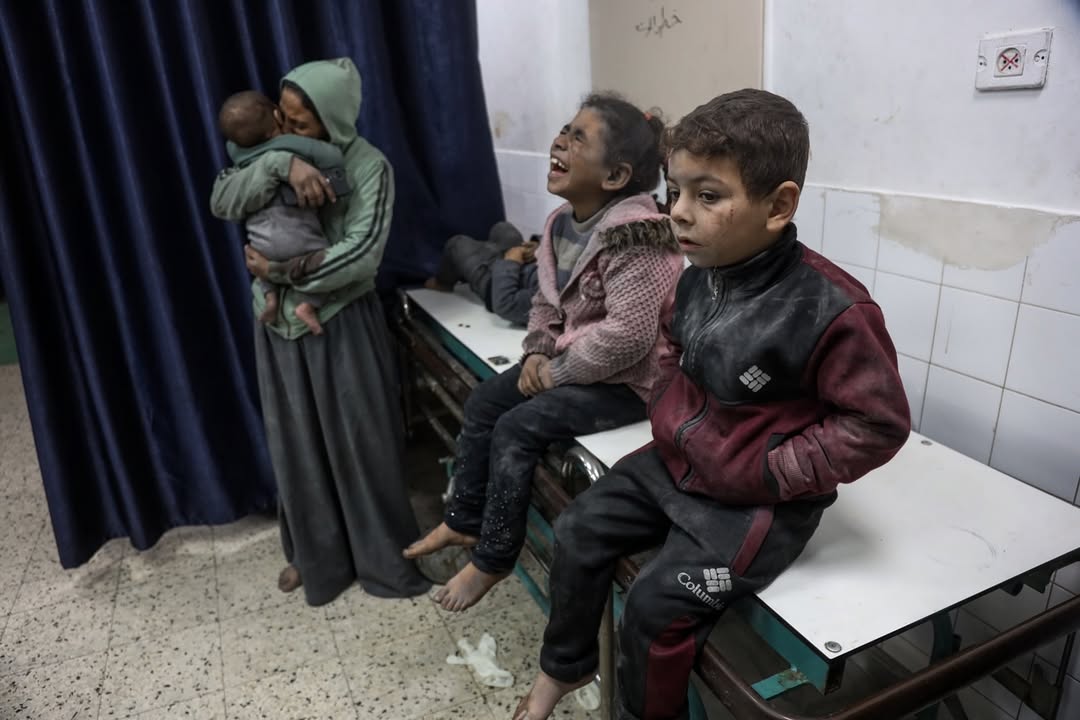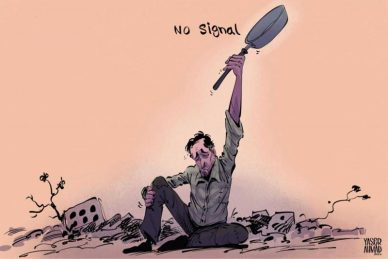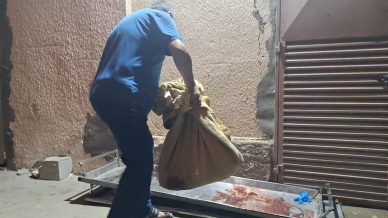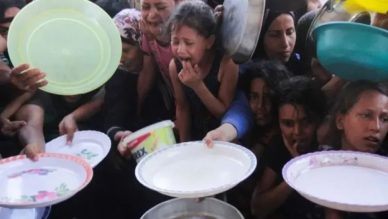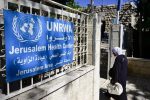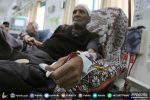GAZA, (PIC)
While families sit in their warm homes, enjoying the peace of the night, their only sound being the TV as they watch a movie, a family drama, or even a cartoon, fathers rush to cover their children’s eyes when violent or inappropriate scenes appear, protecting their child’s mental state and precious childhood. This happens worldwide, while children in Gaza endure the horrors of an ongoing genocide in the Gaza Strip for over 15 months. They face the full details of this ongoing war, including its pain, sadness, and the destructive effects it has on their childhood, which has been violated with no mercy, in the shadow of a troubling global silence.
Children in Gaza, making up 47% of the population of the Gaza Strip, are living in harsh conditions. Some have been martyred, others injured, or permanently disabled, some orphaned or witnessing the killing of their relatives, while others survived horrific massacres. In contrast to the “ordinary” child in the world who only worries about schoolwork and play, a child in Gaza is haunted by the need to survive death and help their family meet basic needs amidst a harsh life in tents and displacement, where nothing is spared.
Killing, starvation, and ignorance plague these children. According to the latest Palestinian statistics, the number of children under the age of 18 in Gaza is estimated at 544,776 boys and 523,210 girls, with approximately 15% under the age of five (341,790 children). Since the beginning of the Israeli aggression on Gaza on October 7, 2023, children have made up 44% of the total martyrs, according to official statistics.
UNICEF nutrition assessments show that severe malnutrition rates among Gaza’s children nearly doubled from January 2024. Rates of wasting (the most life-threatening form of malnutrition) also surged, from 3% to 4.5% in shelters and health centers in northern Gaza, with even higher rates in southern Gaza. The ongoing aggression has also disrupted the educational process, leaving about 620,000 students deprived of their right to education.
Colors of pain and deferred dreams
Eight-year-old Yazan, the beloved child of his family, which consisted of his father, mother, and sister, lost all of them in a bombing that targeted their home in mid-July 2024 in central Gaza. Yazan is now left with the tragic title of “the sole survivor” of that massacre, if one can call it that. He not only lost his family but also his first year of school as he had just started first grade. Now, he is also losing his second year of school as the war continues to steal his life before it even began.
Despite his remarkable intelligence, Yazan does not yet know how to read or write, and he is unaware of numbers, joining the long list of Gaza’s children who live in enforced illiteracy due to the loss of their schools because of the ongoing aggression. Yazan shares that he hopes to become a teacher, just like his mother, who he loved dearly and hopes to reunite with in heaven. “My mother wanted me to be the top student at my school,” he says. “I hope the war will end so I can return to school and fulfill her wish.”
Ten-year-old Mahmoud, who lost his father in a bombing, is one of over 17,000 children in Gaza who have lost one or both parents. Despite the care and attention of his relatives, Mahmoud still struggles with the pain of loss, which has left deep psychological scars. According to his uncle, Mahmoud suffers from involuntary urination, waking up terrified at night, and has withdrawn socially, a stark contrast to his previously outgoing nature. Mahmoud has one wish: for his father to come back, though he knows this is impossible, expressing his yearning for him in these difficult times.
The feeling of death and other catastrophes
A new study by a Gaza-based NGO, sponsored by the “War Children Alliance” in June 2024, revealed that 96% of Gaza’s children feel that death is near, while nearly 50% wish for death due to the psychological effects of the ongoing brutal Israeli aggression. Helen Patenson, CEO of the UK-based “War Children” organization, states that Gaza is one of the worst places in the world for children. The mental scars caused by this relentless assault are invisible yet devastating.
Psychological symptoms like fear, anxiety, nightmares, nail-biting, difficulty concentrating, and social withdrawal are widespread among Gaza’s children. Experts in child nutrition and health affirm that those who survive malnutrition, constant bombardment, infectious diseases, and psychological trauma are doomed to face lifelong health issues. These children are deprived of the opportunity to develop their brains and bodies fully, and many will grow up shorter and physically weaker.
UNICEF has stated that Gaza’s children are isolated from mental and social care. Before the war, over half a million children in Gaza needed mental health support, and now, all children are experiencing immense trauma. UNICEF insists that Gaza’s children deserve an immediate ceasefire and a chance for a peaceful future.
Hope and exceptional circumstances
Despite these harsh realities, Gaza’s children have a different kind of life experience. They grow up quickly due to their heightened awareness of their surroundings, shaped by the war and the traumatic experiences they endure. This rapid maturity also forms their connection to their sacred cause. Historically, Palestinian children have borne the brunt of violence, as seen in the 1987 Intifada, where children were subjected to extreme Zionist cruelty, yet they grew up to fight back during the Al-Aqsa Intifada in 2000.
Palestinian children are in dire need of sympathy and recognition of their pain and deprivation. Despite this, they continue to live, challenging the many hardships imposed on them by the occupation. They have never surrendered, and no one will ever see them surrender.
In the end, the children mentioned in reports, studies, and media are not just statistics, but dreams, memories, and futures stolen by war and occupation. However, the occupation will eventually end, and their stories will live on as a testament to their resilience.

